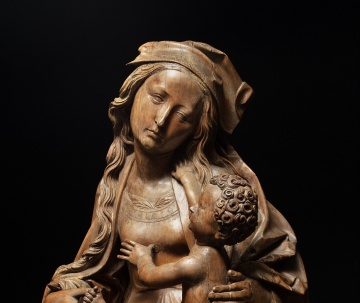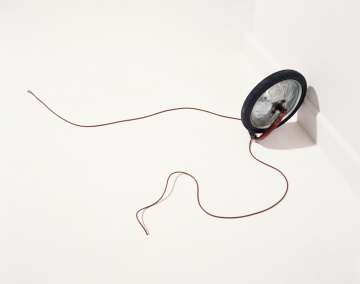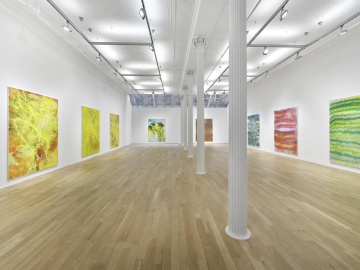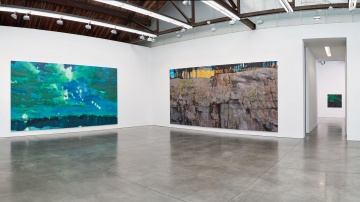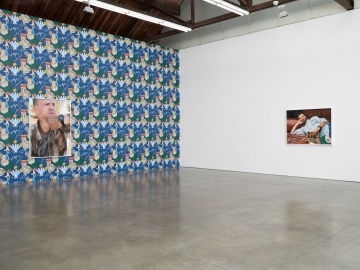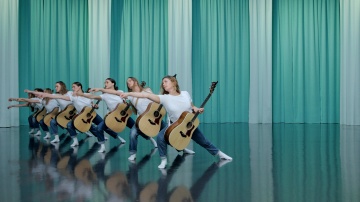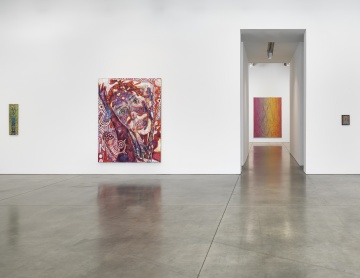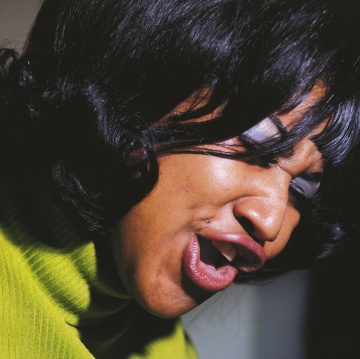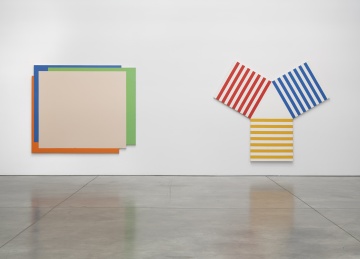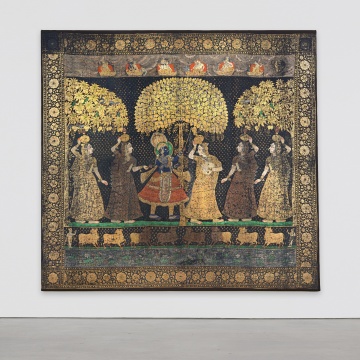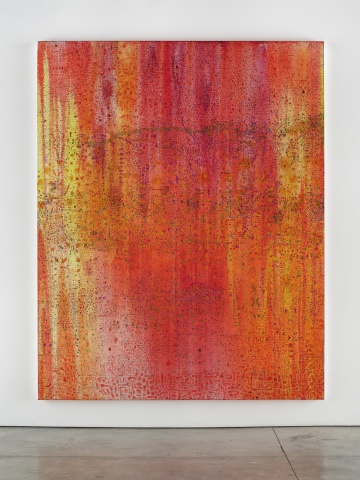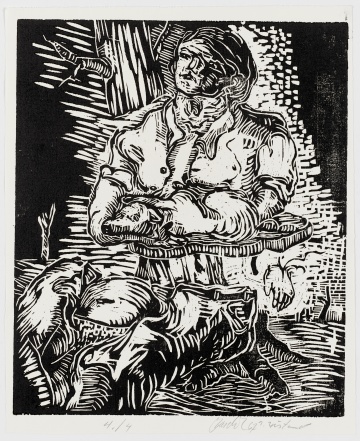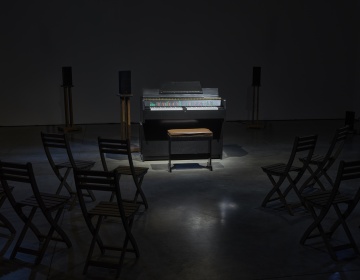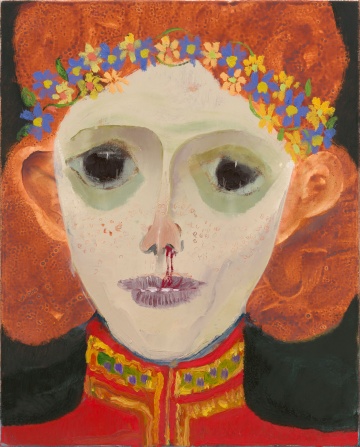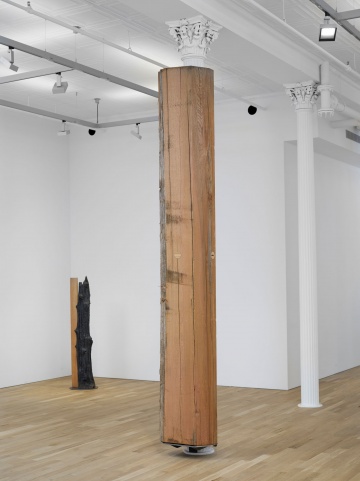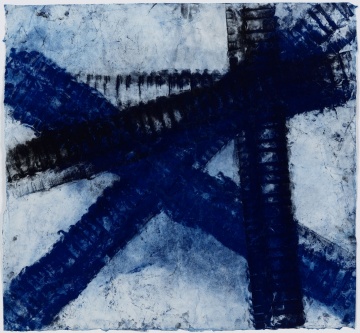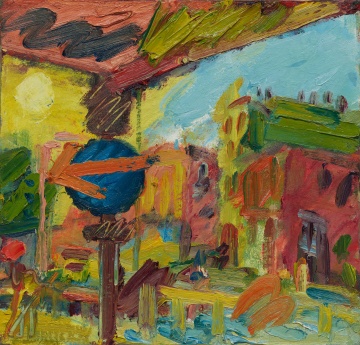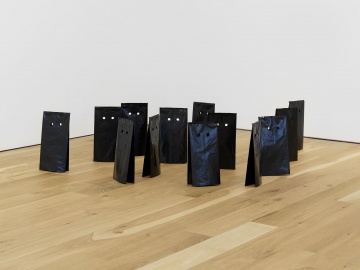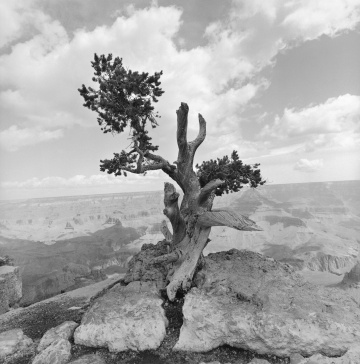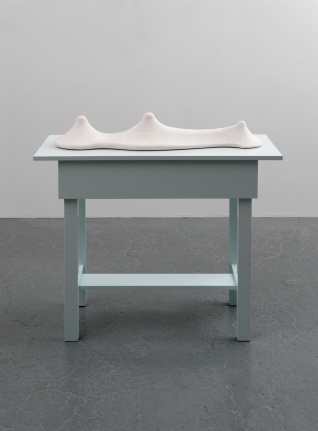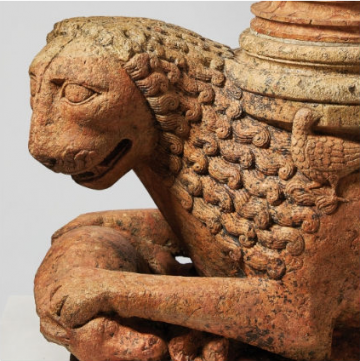Luhring Augustine
Luhring Augustine Chelsea
531 West 24th Street
New York, NY 10011
212 206 9100
Also at:
Luhring Augustine Tribeca
17 White Street
New York, NY 10013
646 960 7540
531 West 24th Street
New York, NY 10011
212 206 9100
Also at:
Luhring Augustine Tribeca
17 White Street
New York, NY 10013
646 960 7540
Luhring Augustine was founded by Lawrence Luhring and Roland Augustine in 1985. The gallery represents a roster of international artists spanning generations, and presents both groundbreaking contemporary and rigorous historical exhibitions. Working closely with more than twenty-five artists and estates, the gallery’s dedicated team nurtures decades-long practices and cultivates meaningful relationships with institutions and collectors.
Based in Chelsea since 1998, Luhring Augustine had a secondary space for large-scale installations and long-term projects in Bushwick, Brooklyn from 2012 to 2023. Opened in 2020, Luhring Augustine Tribeca is the gallery's third distinctive platform in New York City which continues to present its dynamic program.
Artists Represented:
Janine Antoni
Charles Atlas
Jonathan Berger
Janet Cardiff and George Bures Miller
Larry Clark
Lygia Clark
Sarah Crowner
Jeff Elrod
Tomm El-Saieh
Christina Forrer
Lee Friedlander
Mark Handforth
Ragnar Kjartansson
Emily Kraus
Eva LeWitt
Jeremy Moon
Jason Moran
Yasumasa Morimura
Reinhard Mucha
Lucia Nogueira
Lucia Nogueira
Michelangelo Pistoletto
Richard Rezac
Pipilotti Rist
Mohammed Sami
Constanza Schaffner
Diego Singh
Philip Taaffe
Salman Toor
Oscar Tuazon
Tunga
Guido van der Werve
Rachel Whiteread
Steve Wolfe
Christopher Wool
Zarina
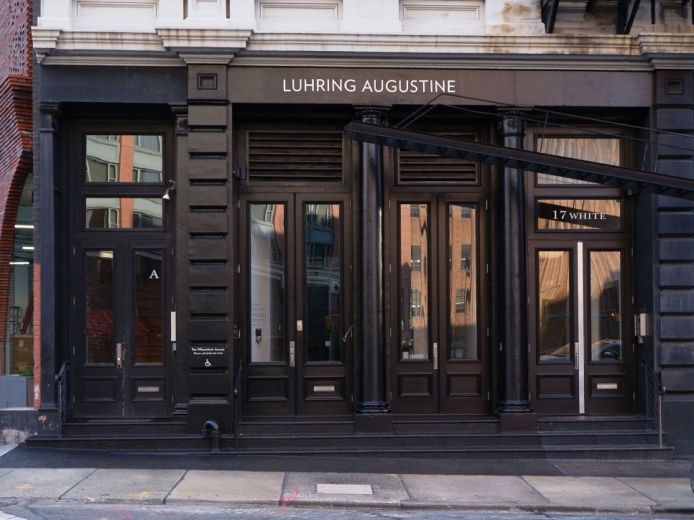
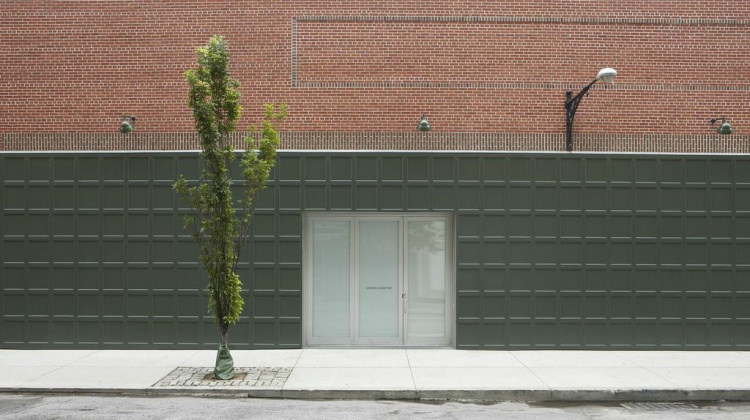
Luhring Augustine - Tribeca Location. Courtesy of Luhring Augustine, New York
Lurhing Augustine - Chelsea Location. Farzad Owrang, Courtesy Luhring Augustine, New York
Treasures of the Medieval World
January 31, 2025 - March 8, 2025
Luhring Augustine and Sam Fogg are pleased to announce Treasures of the Medieval World, the fourth in a series of highly-praised collaborative exhibitions showcasing medieval masterpieces in a contemporary context. Following the success of the first three iterations, Of Earth and Heaven (2018), Gothic Spirit (2020), and The Medieval Body (2022), this exhibition will open on January 31 at Luhring Augustine Tribeca, and run through March 8.
Lucia Nogueira
Ends Without End
January 17, 2025 - February 22, 2025
Luhring Augustine is pleased to announce Ends Without End, a solo exhibition of works by Lucia Nogueira. Marking the artist’s second show with the gallery, and the first in our Chelsea location, the presentation will be on view from January 17 through February 22, 2025.
Group Exhibition
Patterns
June 21, 2024 - August 2, 2024
Luhring Augustine is pleased to announce "Patterns," a group exhibition presented in both our Chelsea and Tribeca galleries. On view from June 21 through August 2, the show highlights over twenty artists whose work explores pattern in diverse ways—as a motif, organizing principle, compositional device, and strategy. The cross-generational group of artists included present works of painting, weaving, quilt-making, mosaic, and sculpture.
Group Exhibition
Patterns
June 21, 2024 - August 2, 2024
Luhring Augustine is pleased to announce "Patterns," a group exhibition presented in both our Chelsea and Tribeca galleries. On view from June 21 through August 2, the show highlights over twenty artists whose work explores pattern in diverse ways—as a motif, organizing principle, compositional device, and strategy. The cross-generational group of artists included present works of painting, weaving, quilt-making, mosaic, and sculpture.
Tomm El–Saieh and Diego Singh
Flaming Mirror
May 10, 2024 - June 15, 2024
Luhring Augustine is delighted to announce "Flaming Mirror," an exhibition of new works by Tomm El-Saieh and Diego Singh, which will be on view in our Tribeca location May 10 – June 15, 2024.
William Eric Brown, Sophia Chai, Kevin Landers, Brittany Nelson, Shaun Pierson, Gonzalo Reyes Rodriguez, and Sheida Soleimani
Tiptoeing Through the Kitchen, Recent Photography
April 26, 2024 - June 8, 2024
Luhring Augustine is pleased to announce "Tiptoeing Through the Kitchen, Recent Photography," an exhibition of new and recent work by seven artists: William Eric Brown, Sophia Chai, Kevin Landers, Brittany Nelson, Shaun Pierson, Gonzalo Reyes Rodriguez, and Sheida Soleimani. Organized by Lauren Wittels and Sasha Helinski, the show will open in our Chelsea location April 25 and remain on view through June 8.
Sarah Crowner
Hot Light, Hard Light
March 16, 2024 - May 4, 2024
Luhring Augustine is delighted to announce "Hot Light, Hard Light," an exhibition of new sculptures and paintings by Sarah Crowner. Marking the artist’s first solo presentation with the gallery, the exhibition will open at our Tribeca location on March 16 and run through May 4.
Constanza Schaffner
Leones, Flores, Constanzas
January 13, 2024 - March 2, 2024
Luhring Augustine is pleased to present "Leones, Flores, Constanzas," an exhibition of new paintings by the Argentine, New York-based artist Constanza Schaffner. Marking her first solo presentation with the gallery, the show will open on January 13 at our Tribeca location and remain on view through March 2.
Pipilotti Rist
Prickling Goosebumps & a Humming Horizon
November 18, 2023 - March 30, 2024
Opened in November 2023, self-described “wild and friendly” Swiss artist Pipilotti Rist presents a selection of new and recent sculptural works and projections in "Prickling Goosebumps & a Humming Horizon," a major two-part exhibition opening in Chelsea. The exhibition, which takes place simultaneously at Hauser & Wirth’s 22nd Street location and Luhring Augustine’s 24th Street location, has been conceived by the artist as a multisensory experience for visitors. In these complementary presentations, Rist explores interior and exterior––internal and external physical and psychological spaces––with Luhring Augustine reimagined as an expansive, shared “backyard” and Hauser & Wirth transformed into a whimsical “collective living room.”
Frank Auerbach
Frank & Julia
October 27, 2023 - December 22, 2023
Luhring Augustine is delighted to announce "Frank & Julia," the gallery’s second exhibition with the esteemed British painter, Frank Auerbach. This presentation focuses on Auerbach’s portraits of his wife, Julia, alongside self-portraits, and follows his widely lauded 2020 survey show in our Chelsea gallery. "Frank & Julia" will be on view in our Tribeca location from October 27 to December 22, and will be accompanied by a fully illustrated catalogue.
Celebrated for his distinctive painterly lexicon, which is characterized by passionate brushwork and tactile impasto, in this exhibition Auerbach delivers evocative compositions imbued with soul and presence. The paintings and works on paper on view in "Frank & Julia" offer a singular vantage point from which to explore Auerbach’s creative spirit, inviting contemplation into his motivations and artistic methodologies. From the time of their university days when they met at the Royal College of Art in London in the 1950s, Julia was one of the artist’s first sitters. Conversely, only sporadic self-portraits exist from Auerbach’s early career, and it is within the last few years that he has consistently engaged with his own visage as a recurring motif. Notably, all the works featured in this exhibition come from the past decade, with the earliest portrait of Julia made in 2012, and all of the self-portraits finished within the last year.
This harmonious and incisive body of work intricately weaves the personal and the artistic, the self and the familial, the artist and his subject. Viewed through this unique prism, each composition’s formal choices radiate with fresh resonance. For Auerbach, painting remains a lens through which he observes and interprets the world, a means to assimilate and encapsulate his surroundings before distilling them into a composition. The works in "Frank & Julia" go beyond documenting the artist’s personal relationship with his wife, transcending sentimentality, and instead, offer an extraordinary perspective into the genesis of image-making and aesthetic prowess that has been the hallmark of Auerbach’s distinguished career spanning seven decades.
Mohammed Sami
Muzzle of Time
September 8, 2023 - October 28, 2023
Luhring Augustine is proud to present "Muzzle of Time", Mohammed Sami’s first solo exhibition with the gallery and his first in the United States. On view in our Chelsea location from September 8 through October 28, the show will feature new and recent paintings by the Iraqi-born, London-based artist. Several of the works in the exhibition were included earlier this year in "Mohammed Sami: The Point Zero", the widely lauded first institutional solo show of Sami’s work in the United Kingdom, organized by the Camden Art Centre in London and accompanied by the first monograph dedicated to the artist’s work.
Sami’s evocative paintings are an exploration of memory and its vulnerability to time. Mining personal experiences to ground his work, Sami creates a palpable sense of mystery with oblique references to turmoil or conflict. Distinctively absent of human figures, the settings and quotidian objects in his paintings nevertheless convey traces of human presence. Through his singular mark-making methods and compositional approach, Sami creates a sense of ambiguity that parallels the use of metaphor and metonymy prevalent in Middle Eastern literature and language. By interrupting a straightforward reading of his work in this manner, and while exploiting the narrative capacity of representational painting, Sami allows for what he refers to as a sense of “muteness” to occupy his paintings, rendering them both enigmatic and deeply engaging. One of the monumental paintings in the exhibition, "One Thousand and One Nights"(2022), depicts a magnificent Baghdad night sky dotted with the bright lights of what appear to be either stars or missiles. The painting’s poetic title, and the similarity of its palette to military night vision technology, further complicate the viewer’s experience and understanding of the work. In "Meditation Room" (2022), a portrait of an authoritarian male figure—his face hidden by shadow—hangs on the wall of an ominous domestic interior. A crumpled rug ineffectually barricades a slightly ajar door, allowing an intense, fiery light to cut through the space. Throughout Sami’s work, attempts to classify memory as an exact experience are eluded. For the artist, regardless of distance and time, memory is capable of stretching slowly and gradually over the years like an oil stain, until eventually, indelible, it necessitates a belated response.
Yasumasa Morimura
Self–Portraits
September 5, 2023 - October 21, 2023
Luhring Augustine is pleased to announce "Yasumasa Morimura: Self-Portraits", the artist’s ninth solo show with the gallery, and his first presentation in our Tribeca location.
For nearly four decades Morimura’s conceptual multi-media practice, which includes photography, film, and performance, has been realized through the meticulous and innovative use of costumes, makeup, and staging. Masterfully transforming himself into famous figures who are often pulled from the Western cultural canon, such as Vincent Van Gogh, Marilyn Monroe, and Albert Einstein, Morimura’s work reference well-known imagery ranging from historical paintings and photographs, to pop culture and mass media. His reinvention of these iconic photographs and art historical masterpieces into a form of self-portraiture challenges conventional associations viewers may have with these well-known subjects, while also commenting on Japan’s complex absorption of Western culture in the post-war era.
At the center of the exhibition is Morimura’s "One Hundred M’s self-portraits", a series of 100 photographs in which he depicts renowned personalities. In these works, Morimura slips seamlessly into character, portraying the sensuality of Brigitte Bardot, theatricality of Michael Jackson, and elegance of Audrey Hepburn with ease. Through his avant-garde depiction of performers and characters, he subverts the concept of the “male gaze,” and within each image he both challenges the authority of identity and overturns the traditional scope of self-portraiture. Complementing this seminal piece are photographs from the artist’s actress series, a body of work which delves into the complex and captivating history of Western femininity, identity, and fame. Blurring the lines between reality and artifice, Morimura engages with the enigmatic allure and complex narratives of these cinematic starlets. With a discerning eye and a profound understanding of cultural context, his actresses unveil a mesmerizing tapestry of identities, exploring the transformative power of visual storytelling and inviting audiences to question the constructs of fame, beauty, and the self.
Lee Friedlander
Lee Friedlander Framed by Joel Coen
May 13, 2023 - June 24, 2023
Luhring Augustine is pleased to announce "Lee Friedlander Framed by Joel Coen", opening in our Chelsea location on May 13. Curated by the widely acclaimed filmmaker Joel Coen, the exhibition showcases approximately 45 of Friedlander’s photographs that span the range of his 60+ year career, bringing into the equation many lesser-known images. Rather than focusing on a single subject or period, Coen’s selection concentrates on Friedlander’s singular approach to composition and evidences an unexpected affinity between the two artists, both of whose work explores the sly power of images.
Mark Handforth
Mark Handforth: Half-Sleep-City
May 6, 2023 - July 28, 2023
Luhring Augustine is pleased to announce "Half-Sleep-City", an exhibition of new works by Mark Handforth. Marking the artist’s first solo show with the gallery, the exhibition will be on view in our Tribeca location from May 6 to July 28. Complementing the presentation, Handforth’s new public sculpture, Franklin Street Four, will be installed across the street through November 2023.
Buck Ellison
Buck Ellison: Little Brother
March 17, 2023 - April 29, 2023
Luhring Augustine is proud to present "Little Brother," a solo exhibition of works by Los Angeles-based artist Buck Ellison. On view in the gallery’s Chelsea location from March 17 through April 29, the exhibition includes photography, film, and a new wallpaper installation.
Rachel Whiteread
March 10, 2023 - April 22, 2023
Luhring Augustine is pleased to announce an exhibition of new works by Rachel Whiteread. Opening in our Tribeca location on March 10, the presentation marks the eleventh solo show of the artist’s work since the gallery began representing her in 1991, and her first in this space. Featuring intimately scaled floor and wall pieces, the exhibition showcases Whiteread’s facility and experimentation with a wide range of materials and surfaces.
Philip Taaffe
November 12, 2022 - December 22, 2022
Luhring Augustine is pleased to announce an exhibition of recent paintings by Philip Taaffe, which opens on November 12 in our Tribeca location. The presentation of new work will feature intimate kaleidoscopic panels realized in monotype and collage, and rooted in a process recently developed by the artist. Expanding on Taaffe’s celebrated ability to build complex compositions, the paintings cull from a wide variety of sources, from illuminated manuscripts to historical natural science materials.
Ragnar Kjartansson
Ragnar Kjartansson: There is a song in my heart and a hammer in my brain
October 29, 2022 - December 17, 2022
Luhring Augustine is pleased to announce an exhibition of new works by Ragnar Kjartansson featuring two installations, No Tomorrow (2022) and Guilt and Fear (2022), and a watercolor painting, I Love You Baby (2022). Opening in our Chelsea location on October 29 and running through December 17, the show marks Kjartansson’s sixth solo exhibition with the gallery.
Christina Forrer
September 17, 2022 - October 29, 2022
Luhring Augustine is pleased to announce a solo exhibition of recent works by Christina Forrer. Marking the artist’s second presentation with the gallery, the show opens in our Tribeca location on September 17th and remains on view through October 29th.
Featured in the exhibition will be a selection of new weavings, all produced within the past year, as well as Sepulcher, an enormous, Boschian woven tableau that was the keystone of Forrer’s recent solo MATRIX presentation at the Wadsworth Atheneum Museum of Art in Hartford, CT. Also on view will be a wide range of Forrer’s recent works on paper, presented in handmade table vitrines installed throughout the gallery. These works highlight the artist’s prodigious drawing output, it is a practice she performs every day and the resulting works vary greatly: some include notations and sketches, others are more resolved and discursive paintings on paper.
Georg Baselitz
Georg Baselitz: 20th Century Prints
September 6, 2022 - October 15, 2022
Luhring Augustine is delighted to announce a second exhibition of prints by Georg Baselitz opening at our Chelsea location on September 6. This presentation, which follows the fall 2021 installation in our Tribeca location of Baselitz prints from the 1960s, will feature a comprehensive selection of woodcuts and etchings from the 1980s and 1990s, along with select prints from the 1970s.
This successive installation continues directly from the 1960s prints in the first exhibition, tracing Baselitz’s development as an artist in subsequent decades through the 1990s. It is notable that 1969 marked the year Baselitz made his first inverted works, a motif that would become a hallmark of his practice and solidify him among the greatest contemporary artists of the day. The upside-down compositions represent his signature method of divorcing figurative content from inherent meaning, a tension he wrestled with from early in his career. Baselitz’s prints take this a step further, using technical prowess to create formal imagery of such force as to minimize the subject matter almost completely. A master draftsman, he uses techniques such as chiaroscuro, dramatic cross-hatching, vigorous lines, and deliberate areas of color to generate a body of print work that stands apart. As noted in the catalog essay in the third volume of the Baselitz catalogue raisonné of prints, “printmaking…is the technique of inversion and reversal…”[2]
A group exhibition of CENTRAL FINE artists
CENTRAL SOUNDS
June 24, 2022 - August 5, 2022
Luhring Augustine is pleased to announce CENTRAL SOUNDS, a group exhibition of ten artists from the program of CENTRAL FINE, Miami Beach, opening in our Chelsea location on June 24. Organized by CENTRAL FINE’s founder, artist Diego Singh, the show will include works by:
Loriel Beltrán
Jesús Casimiro
José Delgado Zúñiga
Tomm El-Saieh
Viktor El-Saieh
Chemu Ng’ok
Georgia Sagri
Constanza Schaffner
Diego Singh
Frantz Zéphirin
Lee Friedlander
Lee Friedlander: American Musicians
June 9, 2022 - August 5, 2022
Luhring Augustine is pleased to present American Musicians, a solo exhibition of works by Lee Friedlander. Opening in our Tribeca location on June 9th, this show marks the gallery’s second with the artist and will highlight a selection of Friedlander’s iconic images of American musicians. Featuring notable jazz, country, and blues artists, the photographs trace the history of post-war American music across four decades, from the 1950s to the early 1980s.
Jeremy Moon
May 6, 2022 - June 18, 2022
Luhring Augustine is pleased to announce an exhibition of works by Jeremy Moon (1934 – 1973), opening in our Chelsea location on May 6th. Marking the gallery’s second presentation with the late British abstract painter, the show will reveal the breadth of Moon’s artistic output over the course of his short yet expansive career.
Jeremy Moon is best known for his large-scale geometric paintings that explore form and space through unmodulated planes of color. As a young, British artist in the early 1960s, he was of a generation inspired by American artists on the cutting edge of abstraction. In London, he worked in close proximity to mentors and peers that included Anthony Caro, Phillip King, and Bridget Riley. Central to the theoretical framework for his paintings, was his insistence on the canvas as object, a novel yet increasingly influential concept at the time. This interest led him to experiment with the shaped canvas, a format he would develop extensively over the course of his career. Moon’s use of the grid as a structural device was another integral aspect of his working method and he used it as a tool for experimentation in composition, scale, color, and rhythm. He also explored these concepts and techniques in a number of sculptures and throughout his expansive drawing practice.
Rosa Barba
Rosa Barba: Drawing the Infinite
April 7, 2022 - May 21, 2022
Luhring Augustine is pleased to announce Drawing the Infinite, the gallery’s first solo exhibition by the Berlin-based artist Rosa Barba, opening in our Tribeca location on April 7th. The presentation, which brings together two of her recent film installations and a selection of her sculptural works from the past decade, highlights Barba’s continuous engagement with the representational function of images and language as they are channeled through cinematic apparatuses.
For Barba, cinema is a sovereign and speculative instrument that critically questions the singular properties of space and time, opening up the boundaries of traditional perception. Barba challenges linear modes of presenting and organizing knowledge by reshaping and representing imagery from scientific disciplines, such as astronomy and geology, as well as cultural archives, through shifts in gesture, genre, as well as the decontextualization of information and documents. The films, installations, and sculptures in this exhibition situate her work between experimental documentary and fictional narrative, and an oscillating logic is put forth, one that reflects how information is processed and transformed.
Eva LeWitt
March 25, 2022 - April 30, 2022
Luhring Augustine is pleased to present a solo exhibition with New York-based artist Eva LeWitt. Opening in our Chelsea location on March 25th, the presentation will consist of twenty-one unique sculptures from the artist’s recent Hanging Spheres series.
LeWitt’s sculptures and installations are fabricated as much from space, light, and architecture, as they are from the multitude of hand-altered commercial materials she employs. Mesh, silicone, sponges, and other quotidian store-bought elements are carefully dyed, cast, or stained, and are subsequently imbued with a softness and imperfection that was lacking in their original mass-produced state. The monumental scale of her installations contrasts with the simplicity of form in each individual element. This is one of many paradigms in which LeWitt’s work straddles oppositions: vibrant yet reticent, pliable yet sharp, formally sophisticated yet charmingly imprecise. LeWitt employs minimalism and geometry in a streamlined language of abstraction, which is nevertheless suffused with joy, warmth, and alluring animation.
Court, Epic, Spirit: Indian Art 15th – 19th Century
January 26, 2022 - March 24, 2022
Luhring Augustine, in association with Francesca Galloway, is pleased to present Court, Epic, Spirit: Indian Art 15th – 19th Century, a show of historical artworks from India opening on January 26 at Luhring Augustine Tribeca. The showcase marks the first time Luhring Augustine has partnered with the London-based gallery Francesca Galloway, internationally renowned in the field of Indian art. Court, Epic, Spirit will present a variety of artworks including textiles, paintings, and courtly objects. Grounding the works in their historical context, the selection will offer insights into artistic and cultural movements in India during this time.
The title of the exhibition refers to three key lenses through which to view the multi-faceted and extraordinarily inventive arts of India: court, epic, spirit. With these organizing principles as a guide, the exceptional and iconic works of art in the installation can be more fully considered and understood.
A fine and rare 17th century panel from a lavish royal tent will be among the exhibition’s featured objects. The panel is part of an important group thought to have been originally commissioned for the Muslim rulers of the Deccan, a region of central India. For both Rajput and Mughal rulers, tents were immensely important, especially to the latter given the nomadic lifestyle required to govern their vast empire.
Indian painting is above all a storytelling medium, created to illustrate epic texts. These narratives, and the paintings that accompanied, them were an integral aspect of the region’s cultural traditions throughout this period. A work of particular importance in the exhibition is a recently discovered 16th century painting from the early Imperial Mughal manuscript of the great epic, the Hamzanama (‘Story of Hamza’), one of the supreme achievements of Indian art. Commissioned by a young Emperor Akbar, it is the only known folio depicting this episode and represents a significant addition to the scholarship, not least because it was painted by Dasvant, a master artist in the Imperial atelier.
Also significant to the artistic output of the region were artworks focusing on the idea of worship – some depicting and enabling acts of revery, and some imbued with spiritual power. Hindu ragamala paintings depict verses that in turn evoke a mode of music. Through a very unusual group of 17th century ragamala paintings, most likely from the northern Deccan, the connection between sound, image, and spirit can be explored. The wild sense of colour and proportion coupled with stark architecture and sumptuous textiles, lend these paintings an assured and individual aesthetic. Another highlight of the show will be a masterpiece of painting on cloth illustrating Dana Lila, or Krishna playfully demanding a toll from the gopis. This type of Deccani pichhvai, a painted cotton temple cloth, is rare, with only a handful of examples in museum collections around the world.
Court, Epic, Spirit: Indian Art 15th – 19th Century will be on view through March 19, 2022 and will be accompanied by an illustrated catalogue.
The Medieval Body
January 21, 2022 - March 12, 2022
Luhring Augustine and Sam Fogg are pleased to announce The Medieval Body, the third in a series of vanguard exhibitions that places medieval masterpieces within a contemporary context. The first two collaborative projects were met with much acclaim, Of Earth and Heaven was presented in 2018 and Gothic Spirit in 2020. Opening January 21 in Luhring Augustine’s Chelsea location, The Medieval Body will be on view through March 12, and is accompanied by a fully illustrated catalogue.
The title of the exhibition refers to both a literal thread of figuration that runs throughout the works in the presentation, as well as the complex and often shifting symbolism of the human body in the medieval period. For thinkers and artists of that time, the human body served as a rich source of religious and philosophical significance, one that was in a constant state of flux between idealism and disfigurement. While the early Middle Ages reserved representations of suffering bodies to the margins of their world, the later Middle Ages displayed wounded bodies in the most central spaces of public life. The crucified body of Christ and the wounded bodies of saints assumed important positions as they were displayed on altars, in processions, and on the exteriors of churches. Representative of this, The Martyrdom of Saint Sebastian by Jörg Lederer gives prominence to the late medieval trend of displaying a suffering human body at the altar, while Saint Quentin being tormented portrays a vivid murder scene meant for the façade of a church - the gruesome episode is palpable in the intricately sculpted depiction. The intimate belief in the inextricable connection between the body and the soul, whether in life or in death, also led to the worship of saints’ body parts. The enormous sacrament houses created in late medieval Germany were meant to ostentatiously display and stage Christ’s transubstantiated body. The exhibition features a work attributed to Lorenz Lechler and dated to 1502, a rare Monumental Drawing of a Sacrament House which was designed to stand over 70 feet tall.
The Medieval Body tells a unique story about the human form as both a physical entity and a recognizable metaphor. Presenting works spanning the course of a thousand years, this exhibition offers insight into the body as an essential image-making tool with far-reaching implications for the development of art in the European Middle Ages.
Tomm El-Saieh
Tomm El-Saieh: Toma
November 5, 2021 - December 22, 2021
Luhring Augustine is proud to present "Toma," Tomm El-Saieh’s first solo exhibition with the gallery and the artist’s first in New York. Presented in our Chelsea location from November 5 through December 22, the show will feature new paintings by the Haitian-born, Miami-based artist.
El-Saieh’s dense and rhythmic paintings derive inspiration from myriad sources, ranging from the history of international abstraction to Haitian Vodou traditions, such as trance-induction and percussive music. Obsessive markings—notations, shapes, scratches, and erasures—saturate the surfaces of his canvases, creating fields of bursting, complex color. The synesthetic, all-over compositions that El-Saieh produces through his meticulous process are at once sublime and sensual, mystical and direct, chaotic and restrained. While firmly planted in the realm of abstraction, El-Saieh’s paintings also suggest complex networks, sprawling cities, or molecular structures. Within the clustered code of his brushwork, figurative associations emerge and recede.
This new body of work oscillates between the personal and the cultural, as alluded to in the exhibition’s title. “Toma” is a reference to both the artist’s childhood nickname, and to "Ayiti Toma," the Revolution-era moniker given to Haiti by its people, who by denominating it with a first and last name instilled the nation with a sense of personhood or divinity. El-Saieh’s meditation on Haiti’s rich cultural history and its devastating and complex current state of affairs are intertwined with his own lived experience as a refugee and immigrant, and brought to bear in the creation of these recent works. The paintings pay homage to, and are enkindled by, the indefatigable sense of resourcefulness and ingenuity intrinsic to the acts of creating, making, and forging ahead in Haiti.
Georg Baselitz
Georg Baselitz: Prints from the 1960s
October 15, 2021 - December 23, 2021
Luhring Augustine is delighted to announce a special exhibition of prints by the renowned artist Georg Baselitz, opening in our Tribeca gallery on October 15, 2021. The presentation will feature prints from the 1960s, a decade marked by growth and discovery for the artist. It was during this period that Baselitz first traveled to Italy and was introduced to Mannerist prints and techniques. Spawning a profound fascination with this style, the experience heavily influenced his then burgeoning career as a printmaker – a part of his practice that is regarded as of equal significance with his celebrated paintings. This exhibition will showcase a selection of prints that display the range of methods that Baselitz employs. Highlighted among the works are his “Hero” or “New Type” imagery of singular male figures depicted in heroic stances rendered with dramatic contours and wild gestural lines, their valor is subverted by their weary expressions and tattered clothing. These subjects challenge common perceptions of masculinity, and reference Baselitz’s childhood experience of violence and destruction during the war and post-war era in Germany.
The exhibition will underscore Baselitz’s impressive skill in a diverse array of printmaking techniques, focusing on his woodcuts, drypoints, and etchings. The range of methods reveals the artist’s acute interest in the physicality and laborious nature of printmaking processes. Baselitz has discussed in depth the charge he finds in the resistance of printmaking tools on the surfaces of printing plates, which creates a kind of symbolic power that is translated into the compositions of the finished print. By deviating in small ways from traditional printmaking techniques he developed his own distinct methods, these include the use of oil rather than printer’s ink, and the occasional addition of paint by hand to a completed print.
Janet Cardiff and George Bures Miller
September 10, 2021 - October 23, 2021
Luhring Augustine is pleased to announce Janet Cardiff and George Bures Miller’s fifth solo exhibition at the gallery, which will present three recent bodies of work. The internationally recognized artists, who have collaborated since 1995, are known for their immersive multimedia works that create transcendent multisensory experiences which draw the viewer into often unsettling narratives.
In the entrance gallery, the artists present a new group of collaborative works: small oil paintings are encased in wooden frames with two small speakers and a button. The canvases, painted by Cardiff, depict scenes of rural landscapes. When the button is pressed, music, sound effects, or voices emanate, animating the compositions; pressed again, a different track plays, offering diverging perceptions of the picture’s mise en scène.
The Instrument of Troubled Dreams (2018) is an interactive installation comprised of a 1960s Mellotron keyboard and twenty-three speakers. Visitors are invited to play the instrument, whose seventy-two keys have each been programmed to play back sounds, music, and vocal tracks: a raven flies through the space, soldiers search a small apartment, a carnival floats past on a barge. Improvising on the keys, each participant arranges a distinct audio odyssey, composing unexpected and vivid soundtracks that evoke changing narratives.
In the back room of the gallery, visitors enter a fully immersive installation, Escape Room (2021). The dimly lit room appears to be Cardiff and Miller’s studio, full of worktables scattered with the artists’ projects, tools, and materials. Elaborate dioramas built by the artists are found throughout the space: a model of a cathedral, an apartment building, a factory, a waterfront. Each portrays a mini-dystopia, civilizations that have been eerily abandoned by their inhabitants, leaving traces of something gone wrong, a forced exodus. Sound effects, music, and fragments of narratives are emitted in response to the viewer’s movements, immersing the viewer within the surroundings. At other moments, the illusion is dismantled, allowing the viewer to become keenly aware of the constructed environment and their own voyeurism within it.
Plus One
June 23, 2021 - August 6, 2021
Luhring Augustine is pleased to present Plus One, a group exhibition at our Chelsea location on view June 23 through August 6. The installation will feature nine artists from the gallery’s program, each of whom has invited an artist they admire to participate.
As New York begins to open following the dark days and isolation of the Covid-19 pandemic, Plus One aims to celebrate interpersonal relationships and community building that were so pointedly hindered during the past year. Each of the invited artists were chosen by their colleagues for a variety of reasons – some chose a friend, others chose someone who inspires them or whose work resonates with their own. Much like a party, the spirit and tenor of the show is reliant upon the invited participants, each of whom will present a single artwork. The exhibition will not be circumscribed to the artist pairings but will facilitate conversations and spark new connections between the artworks and their makers.
Richard Rezac
Richard Rezac: Pleat
June 18, 2021 - October 9, 2021
Luhring Augustine is pleased to present a selection of new and recent sculptures by Richard Rezac in our Tribeca location. This will be the artist’s second solo exhibition with the gallery; his first show in 2020 at the Chelsea gallery was disrupted by the COVID-19 pandemic.
Emo Verkerk
Emo Verkerk: Why Not?
May 1, 2021 - June 12, 2021
Luhring Augustine is pleased to announce a solo exhibition of new paintings by the Dutch artist Emo Verkerk. The presentation, organized by the art historian and curator Karel Schampers, marks Verkerk’s first solo show with the gallery and his first in New York since 1982.
Sanya Kantarovksy
Sanya Kantarovsky: Recent Faces
April 24, 2021 - June 21, 2021
Text by Bradley Kronz
“Recent Faces″ is an exhibition of fifteen works by Sanya Kantarovsky, depicting humanlike faces. I was told that most of these faces are not portraits, meaning that most of them are not “real.” Depending on one’s perspective on where art comes from, these could be literal people that exist somewhere not-of-this-world, and it is the artist’s job to make and sustain contact with them. An ideal of this being the painting from Ghostbusters II of “Vigo the Carpathian,” a 16th century warlord who lives inside his own portrait. This is one way of thinking about what an artist does. Conversely, another possibility is that the artist enlists their subconscious to do anything, and then uses their rational mind to make sense of it, in this case as a face. Something like seeing cloud animals, or deciding where to put the carrot on a snowman, but even less than that because there is no carrot. If you have ever made art before, even once, you know exactly what I’m talking about. It is intrinsically linked to the idea of nothingness. Both of these beliefs I find compelling, although most art places possess a strong preference for the former, more seemingly magical possibility, if only because it is hard to make a case for the political and social importance of an often unplanned “trick of the mind.” Also a case I would like to make! Again, the attention to the manner in which these faces appear on a surface could be the way a threshold has made itself visible to us, or simply exercises in a type of efficiency. I can say for sure that the impulse beyond the face, to depict the eyes of a human, tells you that what you are seeing is true. My point being that the need to see a face is a phenomenon of the viewer, but absolutely extends to the artist as well. It provides a form of closure to both, as the artist is also a viewer, especially of their own work. Your beliefs alone inform where that sight comes from.
Oscar Tuazon
Oscar Tuazon: PEOPLE
March 13, 2021 - April 17, 2021
Luhring Augustine is pleased to announce PEOPLE, a presentation of all new sculptural works by West Coast-based Oscar Tuazon, marking the gallery’s second exhibition of the artist. The conflagration of minimalist abstraction and natural elements in these works embody constantly changing morphologies, addressing notions of the natural systems of growth and decay.
Boyle Family
Boyle Family: Nothing is more radical than the facts
March 6, 2021 - April 24, 2021
Luhring Augustine is pleased to present an exhibition of works by Boyle Family, a British collaborative group comprised of Mark Boyle (b. 1934, d. 2005), his wife Joan Hills (b. 1931), and their children, Sebastian Boyle (b. 1962) and Georgia Boyle (b. 1963), marking the first solo presentation by the artists in New York in over 40 years. On view will be a selection of Boyle Family’s renowned earth works, referred to by Mark Boyle as “earthprobes,” created over a twenty-year period between 1969 and 1990. The probes are studies and recreations of randomly selected areas of the earth’s surface, typically in 6ft x 6ft. sections, made from a combination of resin, fiberglass, and found materials. The earthprobes are but one facet of Boyle Family’s multi-sensory practice, which includes installation, sculpture, photography, film, and performance. Envisioning themselves as presenters and re-presenters of the world, Boyle Family’s visually complex work is revelatory, driven by the principle that art is all-encompassing and all-inclusive.
Jason Moran
Jason Moran: The Sound Will Tell You
January 16, 2021 - February 27, 2021
Luhring Augustine is pleased to announce The Sound Will Tell You, a presentation of new works on paper by Jason Moran, which marks the gallery’s second exhibition with the artist. Internationally renowned as a jazz pianist and composer, Moran’s interdisciplinary and often collaborative visual art practice mines the history of music, and its social, cultural, and political subtexts.
Jeff Elrod
Jeff Elrod: The Last Handshake
November 18, 2020 - January 9, 2021
Luhring Augustine is pleased to announce The Last Handshake, an exhibition of new paintings by Jeff Elrod, which will mark the artist’s third solo show with the gallery. Rooted in the tradition of twentieth-century abstraction, Elrod’s paintings employ a unique combination of computerized and analog techniques to depict a flattened “screen space.”
Frank Auerbach
Frank Auerbach: Selected Works, 1976-2016
October 31, 2020 - February 20, 2021
On October 31, Luhring Augustine Chelsea will debut a solo exhibition of Frank Auerbach’s paintings and drawings that will celebrate the mature career of a singular artist. Spanning from the late 1970s to recent works, the selection of his portraits and landscapes on view will underscore Auerbach’s great achievements in painting in the post-war era. The first show of his work in New York of this scale since 2006, the exhibition will be on view through December 19.
Lucia Nogueira
September 12, 2020 - October 31, 2020
The inaugural exhibition at Luhring Augustine Tribeca (17 White Street, New York, NY) will present the first U.S. solo show of the late London-based, Brazilian-born Lucia Nogueira (1950-1998). Over the course of her brief but remarkable career, the artist created a compelling multidisciplinary body of work. Primarily centered on her haunting and minimal sculptures and installations, her practice also incorporated drawing and video. Organized in collaboration with Anthony Reynolds Gallery, London, this exhibition will introduce American audiences to a seminal and underrecognized artist.
Lee Friedlander
September 12, 2020 - October 24, 2020
Luhring Augustine is pleased to announce a solo exhibition of acclaimed photographer Lee Friedlander, opening in our Chelsea location on September 12. The exhibition is Friedlander’s first with Luhring Augustine and his first New York gallery show since 2013. The presentation will highlight Western Landscapes (2016), produced after the artist’s major retrospective at the Museum of Modern Art in 2005. The second gallery will feature a selection of work from other series, such as the rarely exhibited bodies of work Dressing Up: Fashion Week NYC (2015) and Chain Link (2017), as well as choice photographs from America by Car (2010). An online Viewing Room accompanies the exhibition, featuring videos by Giancarlo Roma, Partner of Haywire Press and Friedlander’s grandson, that provide his unique take on the series of works displayed in the show.
Richard Rezac
April 1, 2020 - August 21, 2020
Luhring Augustine Chelsea is now open to the public, Monday-Friday, 11am–5pm. Appointments are encouraged but not required. Visit our website to schedule an appointment.
Gothic Spirit: Medieval Art from Europe
January 25, 2020 - March 7, 2020
Luhring Augustine is pleased to partner with London-based gallery Sam Fogg to present for the first time in a contemporary context roughly thirty masterpieces that are among the finest Medieval art to be found in private hands.
Ritsue Mishima
Lumina
September 13, 2019 - October 26, 2019
garcía, Raina, Shore, Tossin
June 28, 2019 - August 16, 2019
Sanya Kantarovsky
On Them
April 27, 2019 - June 15, 2019
Christina Forrer
March 2, 2019 - April 13, 2019
Prints and Editions
January 25, 2019 - February 23, 2019
Zarina
October 27, 2018 - January 19, 2019
Simone Leigh
September 8, 2018 - October 24, 2018
Phillip King
Color Space Place
June 29, 2018 - August 10, 2018
Oscar Tuazon
April 28, 2018 - June 16, 2018
Sculpture
March 23, 2018 - April 14, 2018

 Back to all Member Galleries
Back to all Member Galleries

